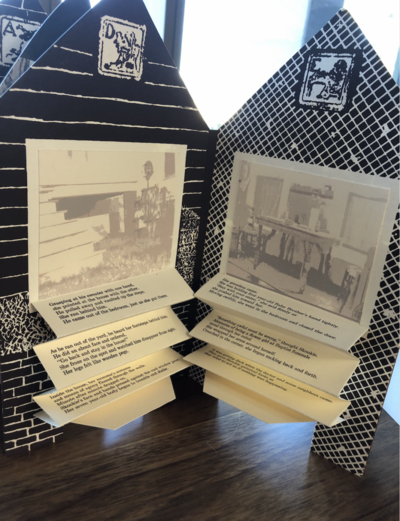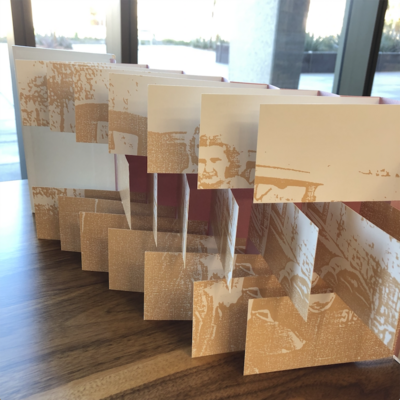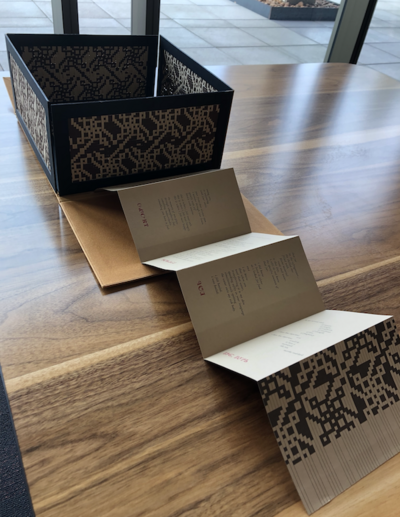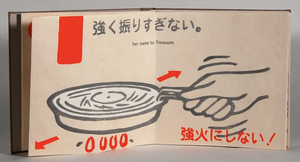Artists’ books, simply put, are works of art in book form. Early forms of artists’ books are attributed to William Blake who famously illustrated his poetry in Songs of Innocence and Experience. In the early 20th century, Ambroise Vollard began to commission artists such as Pierre Bonnard, Picasso, and Georges Rouault to illustrate texts.
In the 1900s, female authors still wrote under male pen names or initials to avoid the discrimination found in publishing houses, run primarily by men. When the Women’s Studio Workshop opened in 1974 in New York, female artists were given a space to be creative and gain artistic experiences. Today it is the largest publisher of artists’ books in North America.
These female artists explore themes and ideas through different printing and papermaking techniques, often using interesting structures to increase engagement. The following artists’ books explore feminist themes such as childbirth, change, and family.
What’s happening with Momma? By: Clarrisa Sligh
Sligh recalls memories of her sister being born in her childhood home. Her story is told through the use of letterpress printing across several folded accordion flaps protruding from images to show how she experienced these events sitting on the stoop of her home. The structure of a house is also intended to create a “safe space” for people to read.
Women and Cars By: Susan King
This structure is called a flag book because of how the different flags (or tabs) weave into one another to show one larger image. When standing up, like a sculpture, the image shows King’s mother in front of her dad’s first car. The opposite side contains paragraphs about the memories that her mother and aunts had with cars.
Ul'nigid' By: Rhiannon Skye Tafoya
Ul'nigid, meaning Strong in Cherokee, unfolds into a hand-woven box structure in the style of traditional Cherokee oak baskets. The design symbolizes love and remembrance, honoring the artist’s indigenous background as well as her grandmother. Finally, Tafoya has printed several narrative poems on an accordion folded pamphlet sharing different memories of her grandmother.
Treasure By: Katie Baldwin
This narrative poem incorporates traditional Japanese woodblock printing known as mokuhanga, letterpress, and screen printing. The images were taken from a Jiffy Pop popcorn label and the Japanese characters are instructions for how to make popcorn. Baldwin describes a woman undergoing personal change and provokes us to think about change in our own lives.
The ASU Library is home to over 300 artists’ books, many of which were published by the Women’s Studio Workshop. If you would like to view these materials in our Wurzberger Reading Room, please submit a request through Ask an Archivist.
Note: Due to Covid-19, we are only accepting in-person appointments from current ASU students, faculty, and staff. We will try to accommodate requests to view materials using our digital repository, scans, or virtual appointments where appropriate.
-Emily Pattni





